It seems like just yesterday that I was bidding au revoir to my beloved bluefin tuna who was heading south (I had dreams of him or her enjoying the beautiful waters of St. Barts but my finned friend apparently does not get all the way to Paradise Found :-)) to avoid the Boston winter. But winter was not too bad this year (spring on the other hand . . . ) and my love is back in New England waters! These locally caught beauties were procured today at the Dewey Square Farmers’ Market at Red’s Best.
Other local fish news – thanks to having a friend with “boots on the ground” or more accurately a “boat in the water” in Provincetown and willingness to detour onto the insane streets of downtown Boston on route from Provincetown to New Hampshire – I was once again the recipient of some seriously gorgeous striped bass (with the bones/tail for soup) as well as some lovely Boston mackerel and littleneck clams.
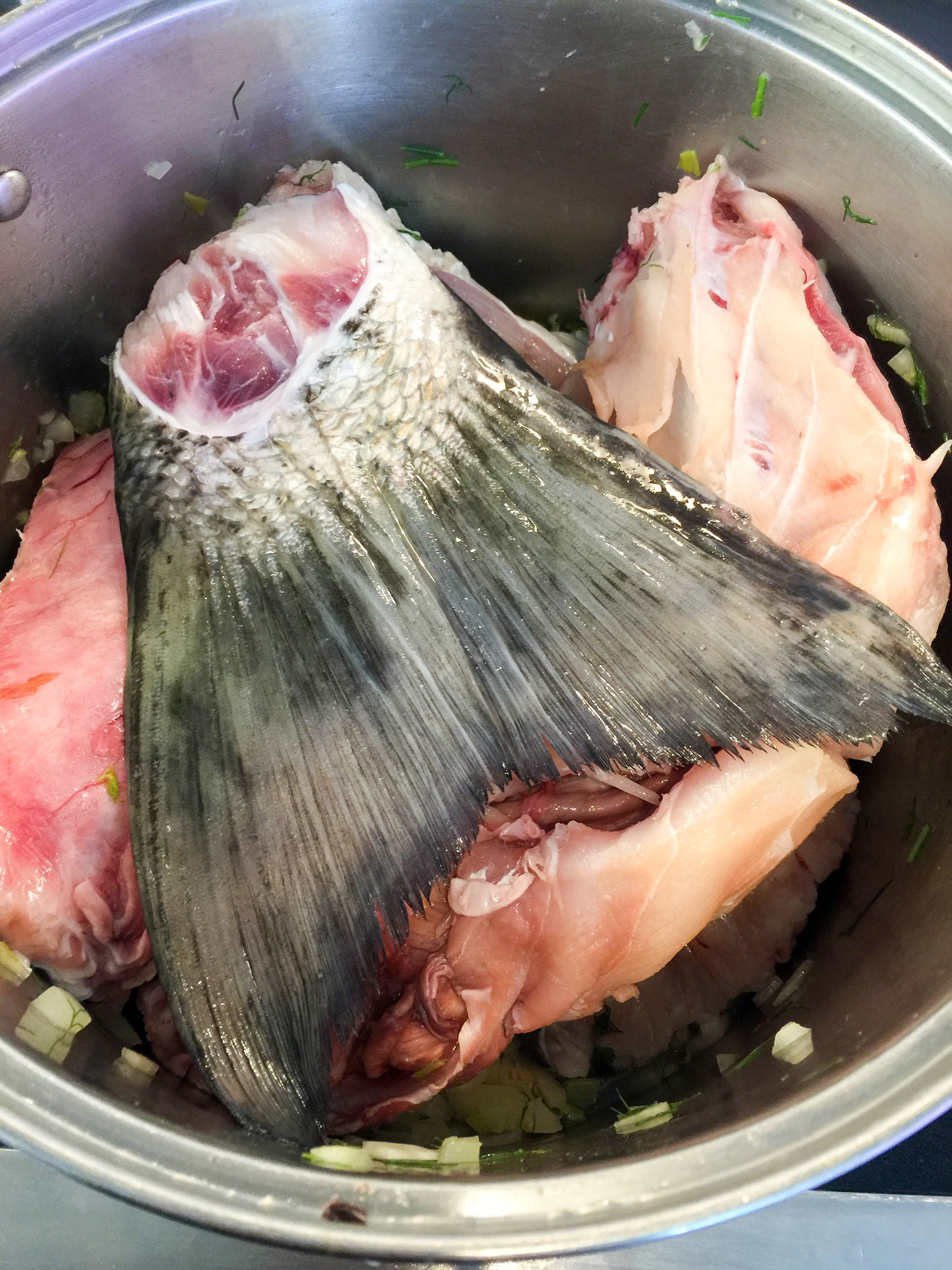
Getting ready to make fish stock. The keys are to cook the aromatics (use some combination of onions, leeks, parsley, thyme, fennel, bay leaf, and garlic) first, then add the white wine, cook off the alcohol, add the fish bones and cover with water. Simmer the stock gently for no more than one hour. Strain and voila! The result is beautiful, gelatinous fish fumet.
Striped bass soup with leeks and fennel and a smoky aioli


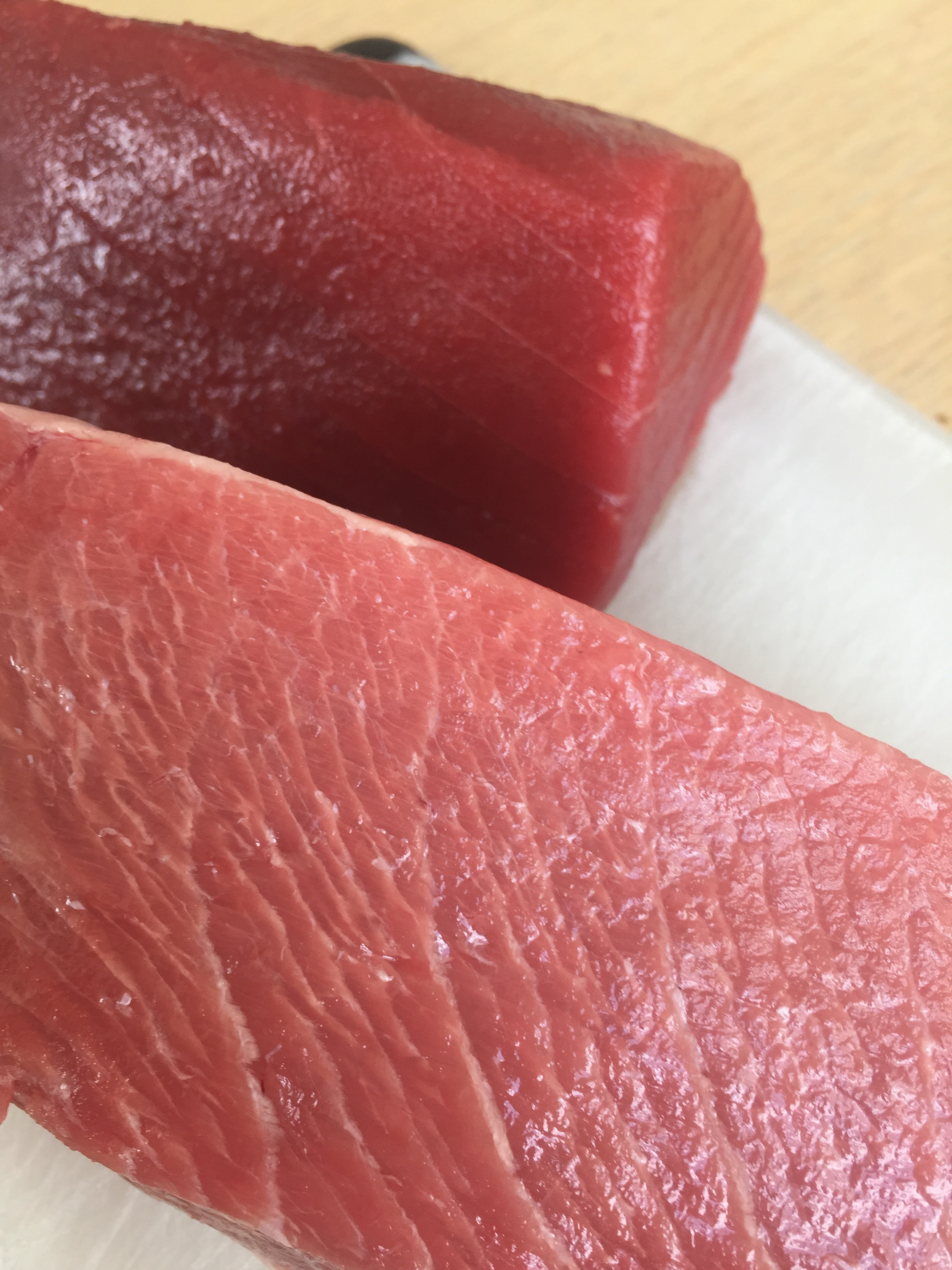
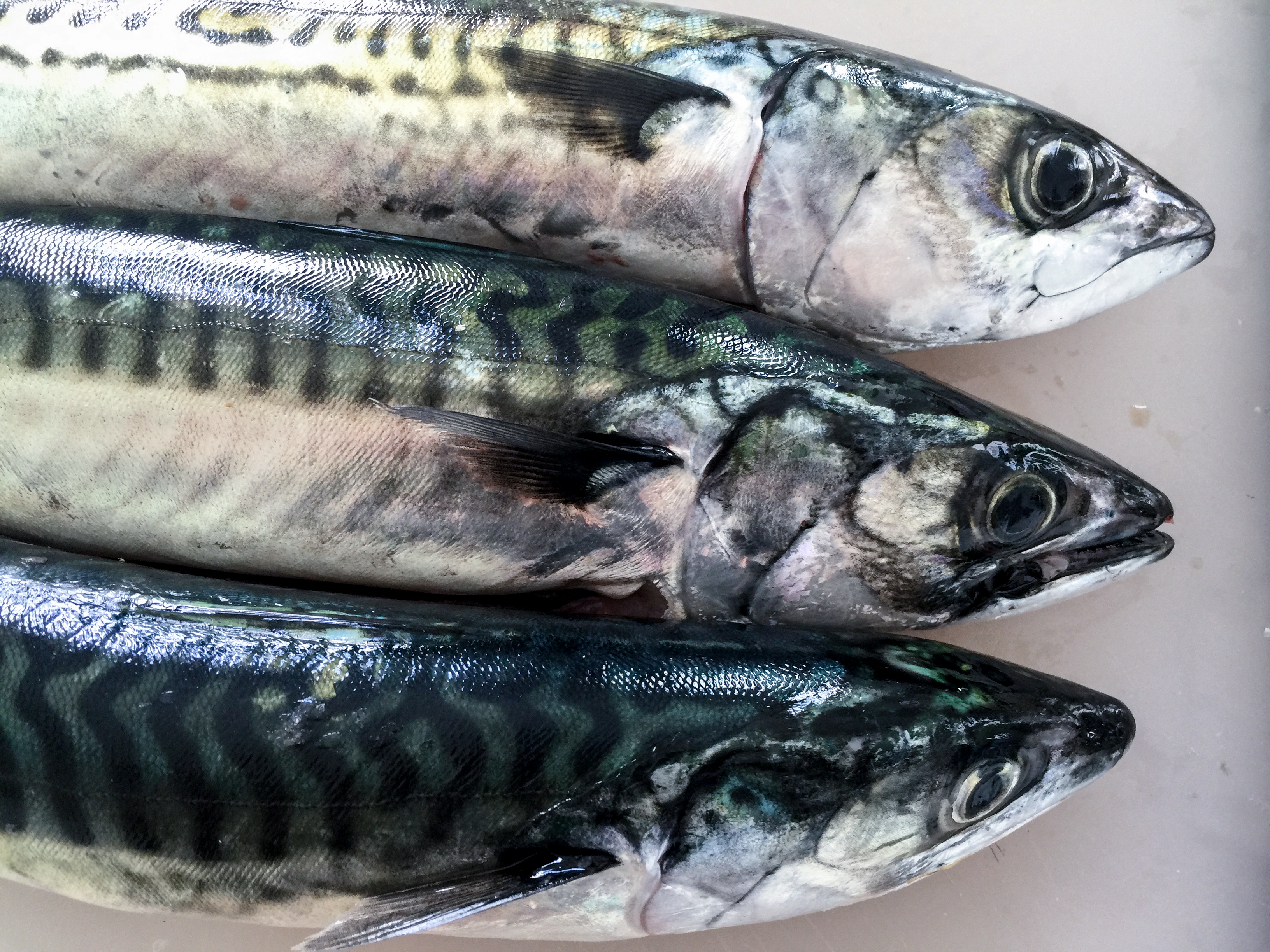
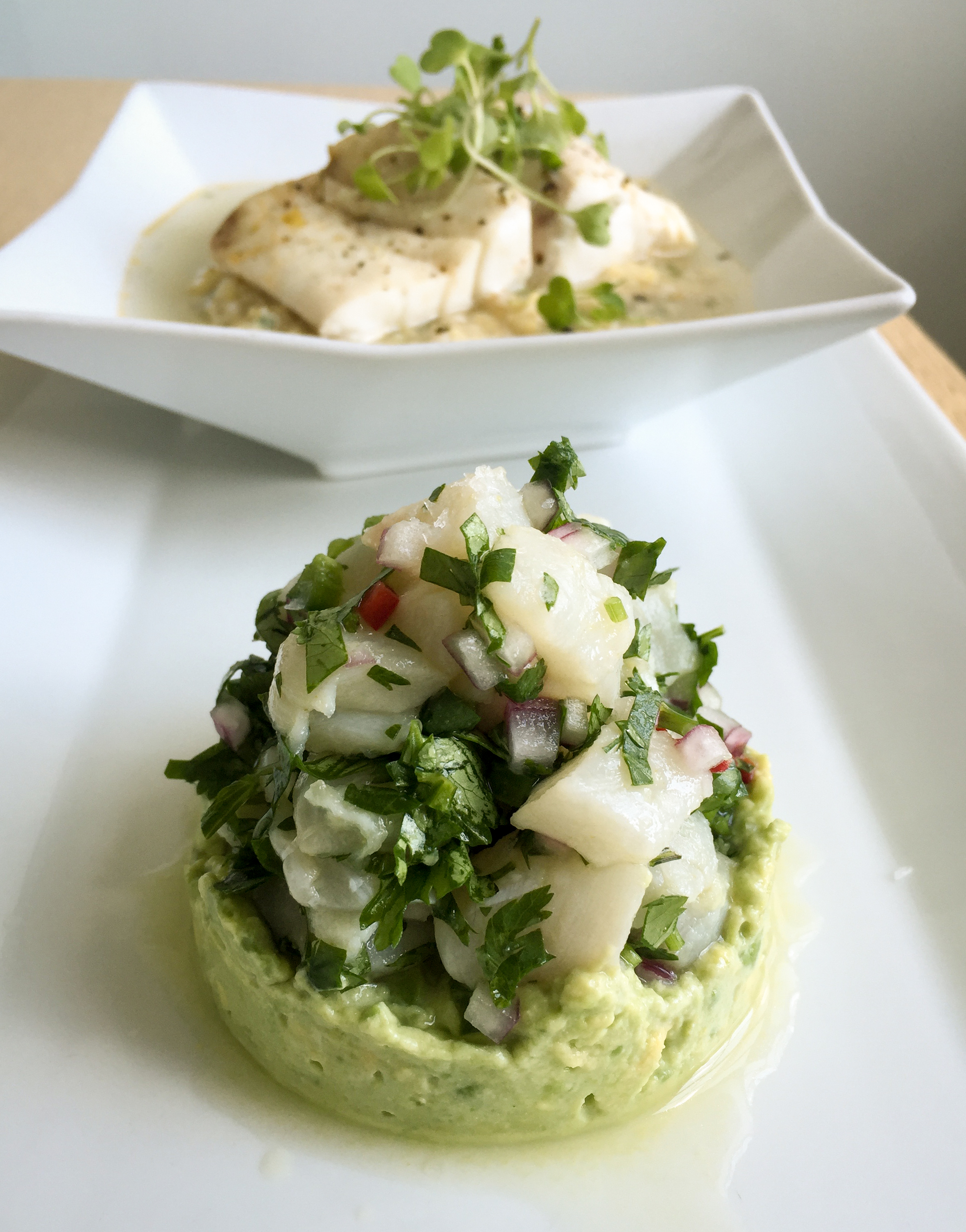
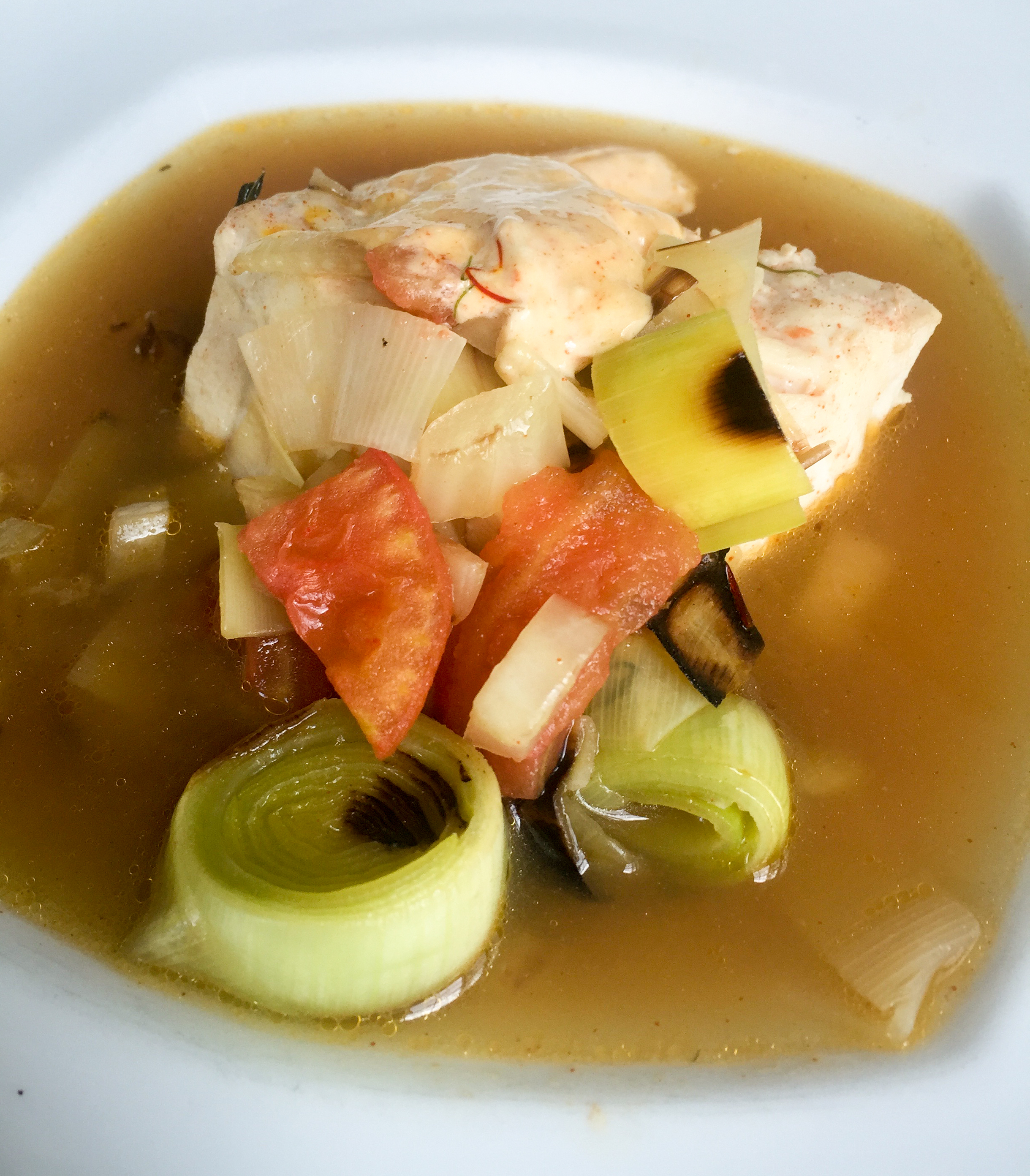

No such thing as littleneck clams according to your friend. They are quahogs to him. I’m glad you set the record straight. LMAO
He just called them clams and I just call them delicious. I think quahog is used sort of generically for all hard clams and also used as a size (large). These were hard clams (as such quahogs) but littleneck size. And really good!
This looks scrumptious. Thank you for the tip about the fish stock
My pleasure Kristen. Fish bones (and fish stock) are totally under appreciated! In less than an hour you have this wonderful gelatin-rich stock. One more tip – pick mild, white fleshed fish (not bluefish or mackerel for example) for a more neutral (not fishy) flavor. Nose-to-tail fish cooking!
I’m intrigued! I just started making Japanese sashimi style saba and saw your post. I wonder if you could share the recipe of your krupnikas cure. Thanks.